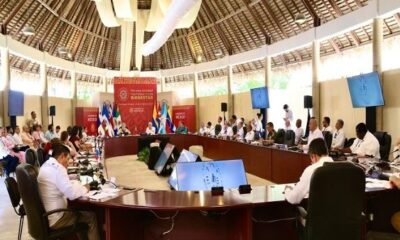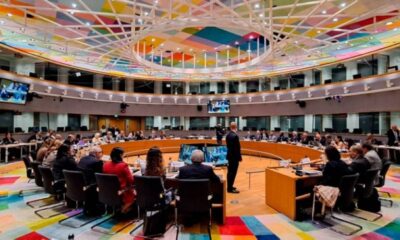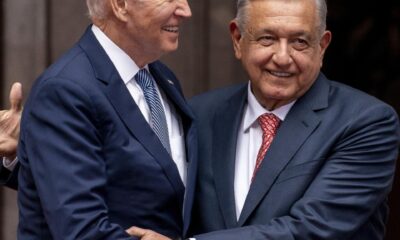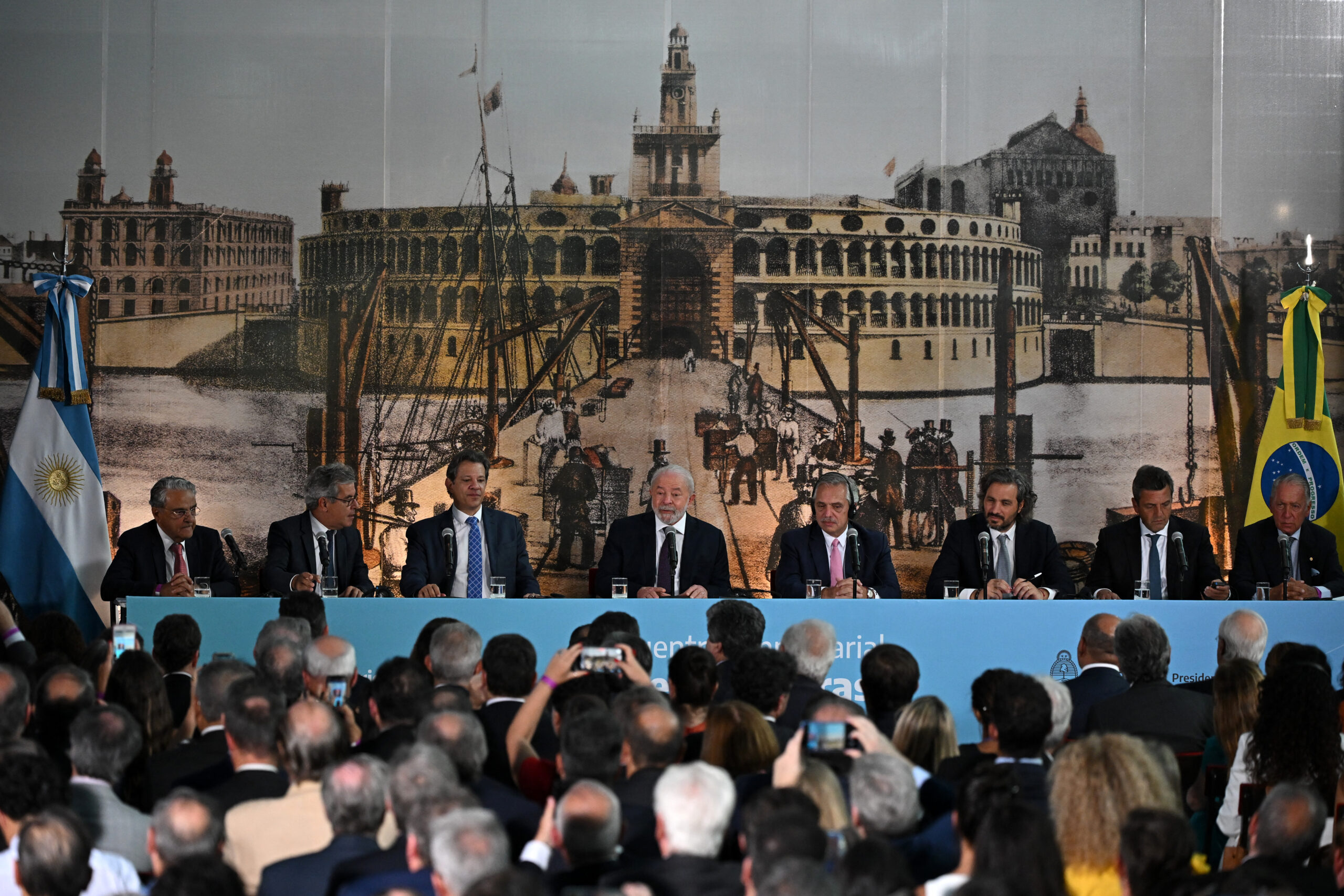International
How has Latin American and Caribbean unity been strengthened?
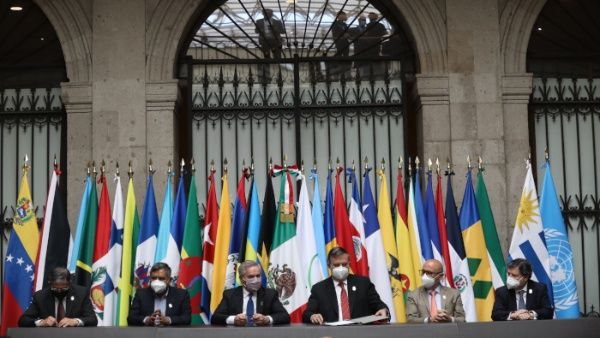
June 22 |
This Thursday, June 22, marks a new anniversary of the Day of Latin American and Caribbean Unity, and is received with renewed encouragement after the electoral triumph of progressive options that promote the integration of the region and the consolidation of initiatives that work towards this goal.
It was in 2001 when the Latin American Parliament (Parlatino) decreed that the Day of Latin American and Caribbean Unity be celebrated every June 22, the date on which the Amphictyonic Congress was installed in 1826.
The Amphictyonic Congress, installed on June 22, 1826 in the city of Panama, responded to the dreams of integration that the Liberator Simón Bolívar had and whose objective was to collaborate in the consolidation of the unity of the new republics, creating a confederation of the Ibero-American peoples from Mexico to Chile and Argentina.
In recent years, progressive options in the subcontinent have won elections to establish integrationist governments, examples of which are Mexico, Argentina, Venezuela, Nicaragua, Bolivia, Chile, Honduras and most recently Colombia, which has been governed since August 2022 by the leftist Gustavo Petro.
After Petro’s victory in the second round of elections held on June 19, the President of Mexico, Andrés Manuel López Obrador (AMLO), stated that his arrival marked the beginning of “a new stage” in the Latin American and Caribbean region.
He also recalled that “when we arrived (in 2018) there were few countries with progressive governments. From our arrival a new stage began and there began to be important triumphs,” he said in reference to Petro’s victory.
Latin America saw an increase in the number of progressive administrations at the end of 2022, with the victory of leftist Luiz Inácio Lula Da Silva, who defeated the far-right Jair Bolsonaro.
Another recent moment of consolidation of regional integration occurred within the framework of the IX Summit of the Americas, held in June 2022 in the city of Los Angeles, California, which had the characteristic that the host country, the United States (US), excluded the governments of Cuba, Venezuela and Nicaragua.
After learning of this decision, Mexican President López Obrador, and others such as those of Honduras, Argentina and Bolivia, among others, conditioned their presence in the continental conclave to the participation of the leaders of the excluded nations.
International
Police investigate deaths of Rob Reiner and wife as apparent homicide

The Los Angeles Police Department (LAPD) is investigating the deaths of Hollywood actor and filmmaker Rob Reinerand his wife as an “apparent homicide,” amid a wave of tributes to the director of classics such as When Harry Met Sally.
According to U.S. media reports on Sunday, Rob Reiner and Michele Singer Reiner were found dead at their Los Angeles mansion with what appeared to be stab wounds.
Several political figures shared messages of condolence following the reported deaths of the director of A Few Good Menand his wife.
While the LAPD did not officially confirm the identities of the victims, it stated that homicide detectives were dispatched to the Reiner residence.
“At this time, no additional details are available and the investigation into an apparent homicide is ongoing,” the Los Angeles Police Department said in a statement posted on social media.
LAPD Deputy Chief Alan Hamilton told reporters that no arrests have been made and that no individuals are currently being questioned as suspects.
“I’m not going to confirm whether anyone is being questioned at this moment or not. We are going to try to speak with as many family members as we can,” Hamilton said.
CNN reported that a family spokesperson confirmed the deaths of Reiner and his wife.
California Governor Gavin Newsom, former U.S. President Barack Obama, and former Vice President Kamala Harrisissued statements expressing their condolences.
International
U.S. and Mexico Reach Deal to Address Water Deficit Under 1944 Treaty

The United States and Mexico have reached an agreement to comply with current water obligations affecting U.S. farmers and ranchers and for Mexico to cover its water deficit to Texas under the 1944 Water Treaty, the U.S. Department of Agriculture said in a statement.
The department уточified that the agreement applies to both the current cycle and the water deficit from the previous cycle.
On Monday, U.S. President Donald Trump accused Mexico of failing to comply with the water-sharing treaty between the two countries, which requires the United States to deliver 1.85 billion cubic meters of water from the Colorado River, while Mexico must supply 432 million cubic meters from the Rio Grande.
Mexico is behind on its commitments. According to Washington, the country has accumulated a deficit of more than one billion cubic meters of water over the past five years.
“This violation is severely harming our beautiful crops and our livestock in Texas,” Trump wrote on Monday.
The Department of Agriculture said on Friday that Mexico had agreed to supply 250 million cubic meters of water starting next week and to work toward closing the shortfall.
Agriculture Secretary Brooke Rollins, quoted in the statement, said Mexico delivered more water in a single year than it had over the previous four years combined.
Trump has said that if Mexico continues to fall short of its obligations, the United States reserves the right to impose 5% tariffs on imported Mexican products.
Mexico’s Deputy Foreign Minister for North America, Roberto Velasco, said that a severe drought in 2022 and 2023prevented the country from meeting its commitments.
International
Several people shot in attack on Brown University campus

Several people were shot on Saturday in an attack on the campus of Brown University, in the northeastern United States, local police reported.
“Shelter in place and avoid the area until further notice,” the Providence Police Department urged in a post on X. Brown University is located in Providence, the capital of the state of Rhode Island.
U.S. President Donald Trump said on his social media platform Truth Social that he had been briefed on the situation and that the FBI was on the scene.
At 5:52 p.m. local time (11:52 p.m. GMT), Brown University said the situation was still “ongoing” and instructed students to remain sheltered until further notice.
After initially stating that the suspect had been taken into custody, Trump later posted a second message clarifying that local police had walked back that information. “The suspect has NOT been apprehended,” the U.S. president said.
-

 International5 days ago
International5 days agoWashington declares State of Emergency as atmospheric river brings severe flooding
-

 International5 days ago
International5 days agoU.S. to require five-year social media history from tourists under Visa Waiver Program
-

 Central America4 days ago
Central America4 days agoHonduras election crisis deepens as CNE president denounces intimidation attempts
-

 Central America5 days ago
Central America5 days agoOAS and EU urge honduran political actors to respect vote results and avoid unrest
-

 International4 days ago
International4 days agoCuba battles out-of-control dengue and chikungunya epidemic as death toll rises to 44
-

 International4 days ago
International4 days agoColombia says it would not reject Maduro asylum request as regional tensions escalate
-

 International2 days ago
International2 days agoSeveral people shot in attack on Brown University campus
-

 International4 days ago
International4 days agoEcuador on track for record violence as homicides hit highest level in Latin America again
-

 International9 hours ago
International9 hours agoPolice investigate deaths of Rob Reiner and wife as apparent homicide
-

 International5 days ago
International5 days agoSix ecuadorian soldiers jailed pending trial for alleged extrajudicial execution
-

 Central America21 hours ago
Central America21 hours agoPanama seizes over three tons of drugs hidden in Caribbean port container
-

 Central America9 hours ago
Central America9 hours agoOAS urges swift recount in Honduras as election results remain uncertain
-

 International2 days ago
International2 days agoU.S. and Mexico Reach Deal to Address Water Deficit Under 1944 Treaty

























